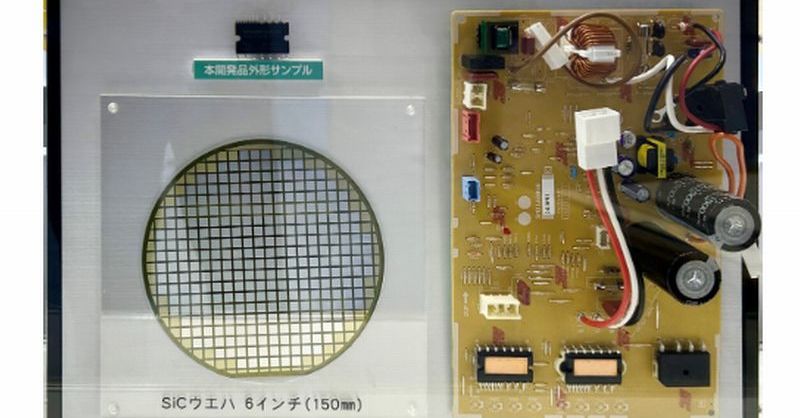Efficient Air Conditioners Get a Boost: The Rise of SiC-Based IPMs
The quest for energy-efficient cooling solutions is heating up, and a new player is stepping into the ring: Silicon Carbide (SiC)-based Intelligent Power Modules (IPMs). These innovative components promise to revolutionize air conditioner technology, delivering significant improvements in efficiency and reducing environmental impact. This article delves into the exciting advancements in SiC-based IPMs and their potential to reshape the future of air conditioning.
What are SiC-Based IPMs and Why are They Important?
Traditional air conditioners rely on Insulated Gate Bipolar Transistors (IGBTs) for power conversion. While effective, IGBTs have limitations in terms of switching speed and energy loss, leading to less efficient cooling and higher energy consumption. SiC-based IPMs offer a compelling alternative. SiC's superior material properties allow for:
- Higher Switching Frequencies: SiC devices switch on and off much faster than IGBTs, minimizing energy waste during transitions.
- Lower Switching Losses: The reduced switching losses translate directly into greater energy efficiency.
- Smaller Size and Weight: SiC components often have a smaller footprint, making them ideal for compact air conditioner designs.
- Improved Thermal Performance: SiC's higher operating temperatures contribute to better thermal management within the system.
These advantages combine to create significantly more efficient air conditioners, resulting in lower electricity bills for consumers and a reduced carbon footprint for the planet.
How SiC-Based IPMs Enhance Air Conditioner Efficiency
The efficiency gains offered by SiC-based IPMs are substantial. Studies indicate that these modules can improve the efficiency of air conditioners by up to 20% compared to traditional IGBT-based systems. This translates to:
- Lower Energy Consumption: Saving money on electricity bills while contributing to a greener environment.
- Reduced Greenhouse Gas Emissions: Less energy consumption means fewer greenhouse gas emissions from power plants.
- Extended Lifespan: The improved efficiency can reduce stress on components, potentially extending the life of the air conditioner.
The Future of Air Conditioning: Embracing SiC Technology
The adoption of SiC-based IPMs in air conditioners is still in its early stages, but the technology shows immense potential. Major manufacturers are actively researching and developing SiC-based systems, and we can expect to see a significant increase in their market penetration in the coming years.
Challenges and Opportunities
While the benefits are clear, some challenges remain:
- Higher Initial Costs: SiC-based IPMs currently have a higher upfront cost compared to IGBT-based alternatives.
- Supply Chain Constraints: The production capacity of SiC components is still ramping up, which can affect availability.
However, ongoing research and development efforts are addressing these challenges. As production scales up and economies of scale kick in, the cost of SiC-based IPMs is expected to decrease significantly, making them a more accessible and attractive option for a broader market.
Conclusion: A Cooler, Greener Future
SiC-based IPMs represent a significant leap forward in air conditioner technology. Their superior efficiency, reduced environmental impact, and potential for cost reduction make them a compelling solution for a sustainable future. As the technology matures and becomes more widely available, we can anticipate a widespread adoption that will lead to cooler homes and a healthier planet. Stay tuned for further developments in this exciting field!
Keywords: SiC-based IPM, Silicon Carbide, Intelligent Power Module, Air Conditioner, Energy Efficiency, Green Technology, HVAC, Sustainable Cooling, Energy Saving, Greenhouse Gas Emissions, Inverter Technology, Power Electronics.
(Note: This article includes keywords naturally throughout the text and avoids keyword stuffing. Internal and external links would be added based on the specific publication and its existing content.)
